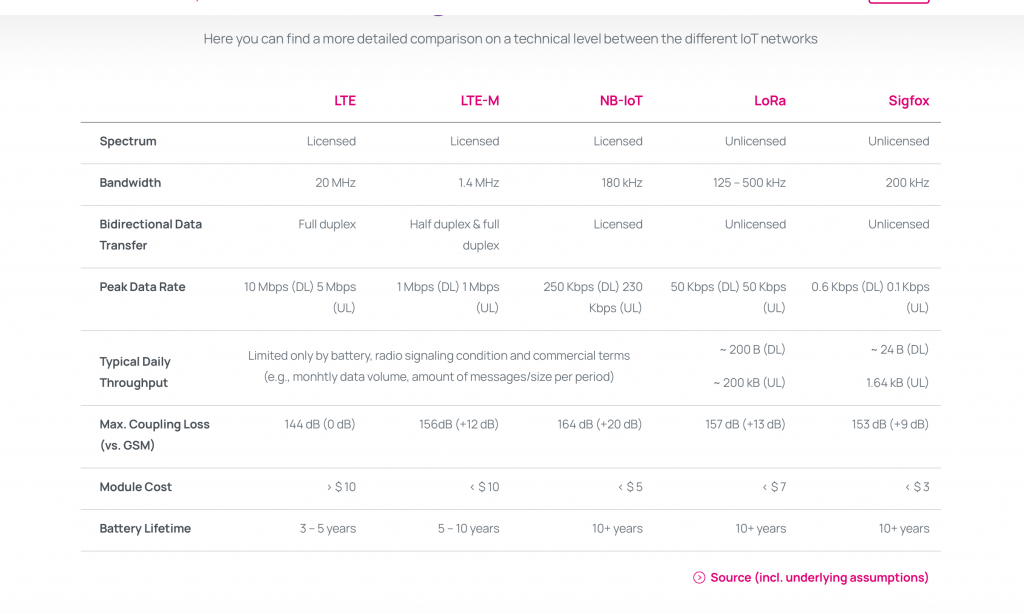The following article relates to 2G, 3G and 4G LTE:
What is a reasonable Signal Strength?
For CAT.M1, ranges of RSRP for good/medium/poor ranges, take the values from LTE and subtract 15dBm, so:
- Excellent: RSRP > -95dBm
- Good: -95dBm ≥ RSRP ≥ -105dBm
- Fair to poor: -105dBm ≥ RSRP ≥ -115dBm
For general guide in NB IoT:
- Strong: RSRP ≥ -100 dbm, and RSRQ ≥ -7 dB
- Median: -100 dbm ≥ RSRP ≥ -110 dbm, and -7dB ≥ RSRQ ≥ -11 dB
- Weak: RSRP < -115 dbm, or RSRQ < -11 dBb
In LTE (includes CAT.M1 and NB IoT) signal strength/quality parameters: RSRP, RSRQ, RSSI, SINR and their meaning.
Scholarly white paper comparing CAT.M1 (LTE-M) and 4G LTE:
Coverage Enhancement modes (only for CAT.M1) and levels:
•CE Mode A: A maximum of UL/DL 32 Repetitions with QPSK, supported by all LPWA platforms. Within this mode there is ECL0 (no repetitions), ECL1, ECL2 (Max. repetitions).
•CE Mode B: A maximum of UL/DL 2048 Repetitions, optional not supported by current Quectel LPWA platforms. Note that such a large number of repetitions would mean minutes of peak current transmit, and impact battery life significantly.
Comparison of LPWAN Technologies

Note that MCL (maximum coupling loss) compared to LTE, is CAT.M1 = +12dBm better, NB IoT is +20dBm better!
However in real life with interference everywhere, the NB-IoT UE cannot go down to RSRP= -164 dBm since even small interference would drown out the real base station reference signal before, say RSRP = -125dBm…